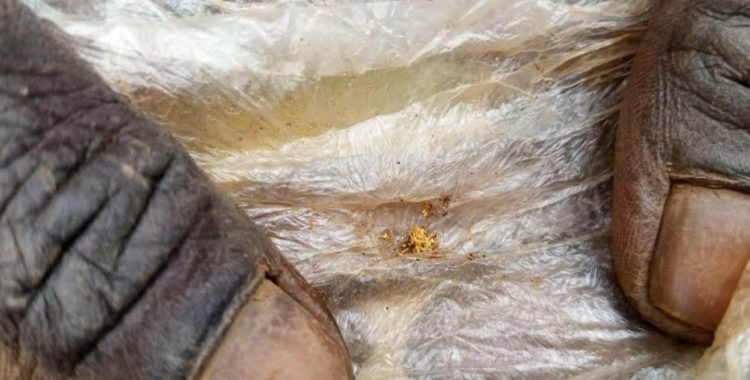What more can be done for established industry and governments to work collaboratively with ASM miners to find a safe, productive and economically viable way of making the system work? This is one of the driving questions behind the plan to create a responsible and self-sustaining supply chain for gold mined in eastern DRC that we are developing alongside the Congolese government.
About Commercially Viable Conflict-Free Gold Project
Implemented by international non-profit Global Communities, the USAID Commercially Viable Conflict-Free Gold (CVCFG) Project aims to link artisanal gold miners in eastern Congo to international markets through responsible channels. As key implementing partner, Levin Sources provides the project with expertise in the artisanal mining sector, as well as well-established relationships with the mid and downstream supply chain, especially refiners and jewellers. Levin Sources is playing a key role to help facilitate trade and investment in ASM gold supply chains that originate from eastern DRC. Global Communities brings over 60 years of experience working with cooperatives globally. Its in-country teams of technical experts boost the capacity of small–scale producers and service workers, and empower them to see their peers, communities and their livelihoods as pathways out of poverty. Under CVCFG, Global Communities will be working to empower and strengthen ASM cooperatives so that they have the capacity to access responsible international markets, as well as maintain commercially viable business practices.
Through this project, we want to:
- Ensure the people of the DRC benefit from their own natural resources through increased access to responsible markets for artisanal gold.
- Work with Congolese authorities and existing regulations and standards to create the right conditions for a responsibly-sourced artisanal gold supply chain.
- Work with artisanal gold cooperatives to make them commercially viable businesses.
We believe that if we can achieve this, we will create a self-sustaining supply chain and reduce funding of conflict by the illicit gold trade and being to develop a downstream demand for responsibly-sourced ASM gold from eastern DRC.
Understanding the mid- and downstream sector needs
How do we get there? The key is to make sure that mid- and downstream actors are prepared to buy the gold. We started the project with a research phase, interviewing manufacturers, refiners and jewellers to understand the dynamics of this complex environment much better. This research was carried out before the current COVID-19 pandemic. Our ongoing research for the project is considering the impact of COVID-19 on ASM and will help the project adapt to the new reality. But the principles defined in our initial research still stand, so remain valuable and worth sharing more widely.
Our key finding was that we need the actors along the entire length of the supply chain to work together for the project to succeed. Specifically, our research showed us that:
- In a crowded marketplace, the story of responsibly-sourced gold from the DRC must be unique, compelling and robust. It must draw in those who are prepared to partner with the project and who are prepared to manage the risks and conduct business in ASM gold from the DRC responsibly in the future.
- The mid-downstream market demands robust risk mitigation and management, in compliance with sector standards, to support trade in responsible ASM gold. Being clear about the programme’s approach to due diligence and what supply chain actors need to do to be due diligence-ready for the market is crucial.
- The industry is set up to work with existing standards and needs early clarity on which requirements and standards are to be applied. The research suggests that the Code of Risk-mitigation for ASM engaging in Formal Trade (CRAFT) could be the most appropriate to support due diligence implementation in the ASM gold supply chain.
- In order to engage quickly, the mid-downstream market needs a detailed and ongoing understanding of the upstream market and supply chain: the needs and expectations of ASM gold communities, miners and traders, and the barriers they face.
- The mid-downstream market needs to be involved in judging the feasibility and desirability of the most appropriate supply chain model to ensure it will ultimately be commercially viable. Phase 2 of the research will explore the incentives necessary to encourage stakeholders to participate in the supply chain.
- A multi-stakeholder approach is essential to improve transparency, build trust and help link the upstream supply chain with mid- and downstream actors.
- Strong linkages between upstream and midstream supply chains will guarantee that activities are steered by the entire market system that functions from mine to consumer, rather than in isolated silos.
- Given the challenges in eastern DRC, stakeholders and supply chain actors need to sign up to continual improvement of a system that can deliver an increasingly commercially viable supply of gold. This necessitates continuous monitoring, evaluation and learning and a clear feedback loop between the program, the government of the DRC and the market systems actors.
The full report is available here in French and English. We hope industry, research and advocacy actors will find it interesting and useful to support their own work. Our research is evolving as the project develops and is helping to shape the emerging solutions. So, watch this space for more reporting as we dig deeper into understanding the complexities of the gold supply chain from eastern DRC.



